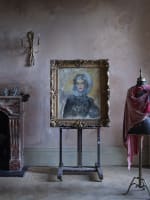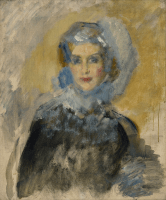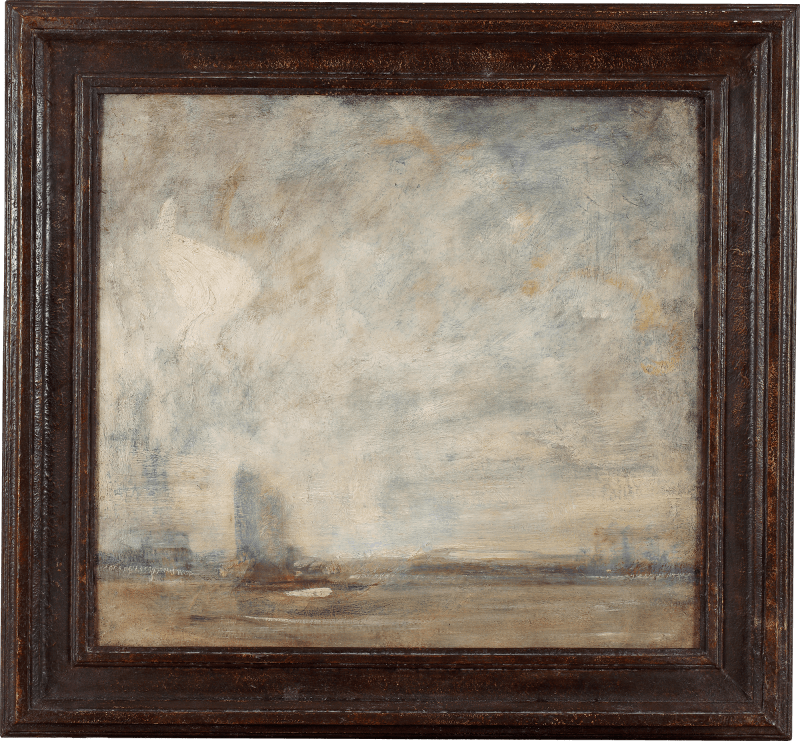This portrait, which is probably unfinished, is a particularly striking work by Ambrose McEvoy, one of the most successful British portraitists of the early twentieth century. McEvoy began his career at the Slade School of Fine Art, having been encouraged by, among others, James Abbott McNeill Whistler. His artistic friends included Augustus John, with whom he briefly lived, and in 1898 he became romantically involved with Gwen John. McEvoy first focused on genre painting, but after exhibiting a portrait of his wife, Mary, at the National Portrait Society in 1915, increasingly focused on portraiture.
One of McEvoy’s earliest public successes came during the First World War. As a war artist, he was sent to the Western Front and to the North Sea fleet to record Victoria Cross winners and senior officers. These military portraits can be seen today at the Imperial War Museum. Amongst them are a moving series of highly decorated lower ranks, such as Petty Officer E...
This portrait, which is probably unfinished, is a particularly striking work by Ambrose McEvoy, one of the most successful British portraitists of the early twentieth century. McEvoy began his career at the Slade School of Fine Art, having been encouraged by, among others, James Abbott McNeill Whistler. His artistic friends included Augustus John, with whom he briefly lived, and in 1898 he became romantically involved with Gwen John. McEvoy first focused on genre painting, but after exhibiting a portrait of his wife, Mary, at the National Portrait Society in 1915, increasingly focused on portraiture.
One of McEvoy’s earliest public successes came during the First World War. As a war artist, he was sent to the Western Front and to the North Sea fleet to record Victoria Cross winners and senior officers. These military portraits can be seen today at the Imperial War Museum. Amongst them are a moving series of highly decorated lower ranks, such as Petty Officer E Pitcher VC, who, despite their heroic actions, seem under McEvoy’s perceptive gaze to convey only a hollow sense of weariness.
McEvoy frequently experimented with composition and technique. In his portrait of Ramsay MacDonald, for example, [House of Commons, London] McEvoy looks up towards the Prime Minister from waist height, as if we are catching him in a private moment. He was also one of the first artist’s to focus on mixing artificial and natural light in his portraits, which may account for the startling impact of the sitter in the present portrait, painted in the mid 1920s. As with many of McEvoy’s portraits, the viewer’s attention is maintained by an unusual perspective or pose, thus enlivening an otherwise static composition in a clear break with the formal portraiture of later 19th century Victorian artists. That said, in this case the sitter’s striking beauty and piercing eyes seem enough to focus our attention, which may in turn account for the fact that McEvoy has chosen not to complete the picture for fear of distracting from such a well captured face.













